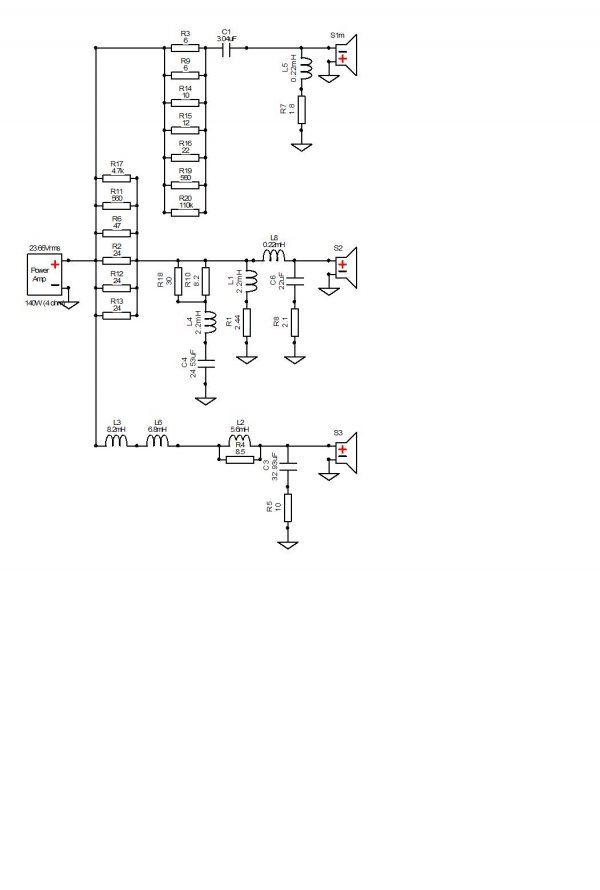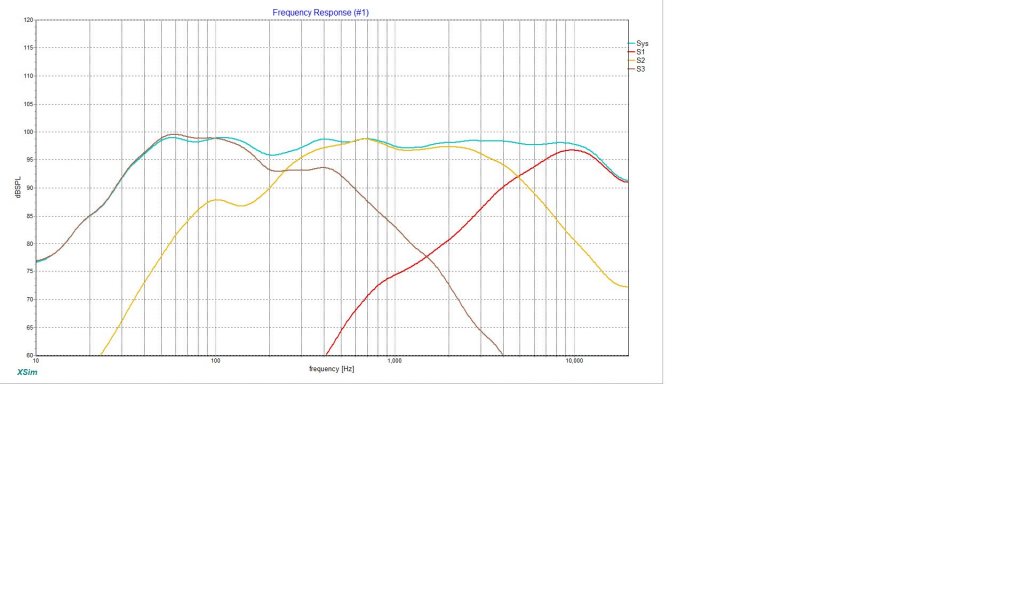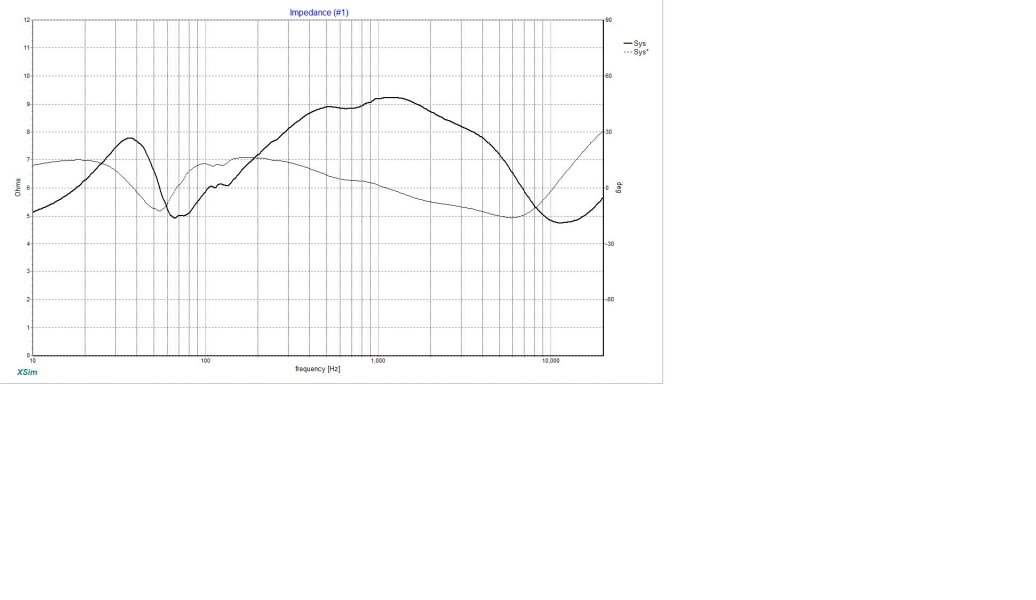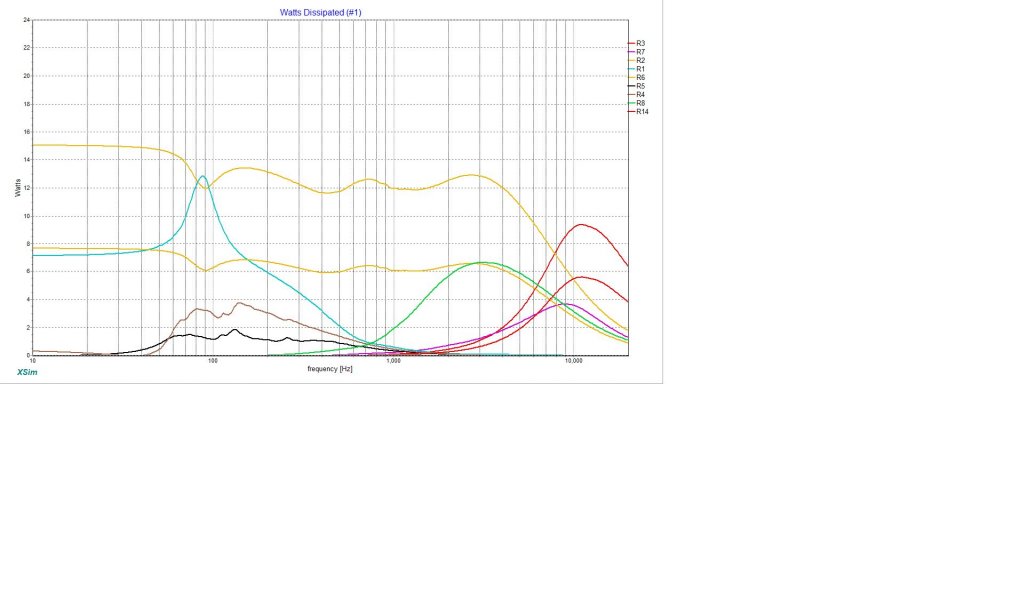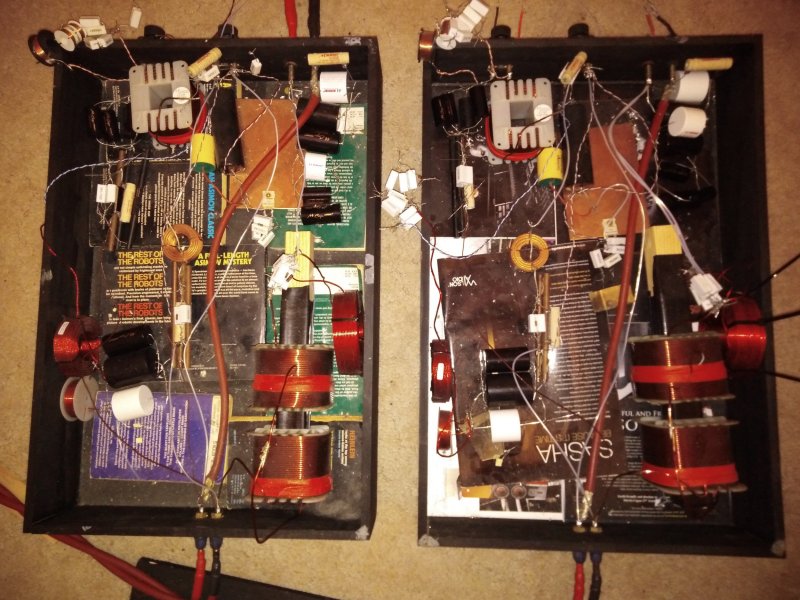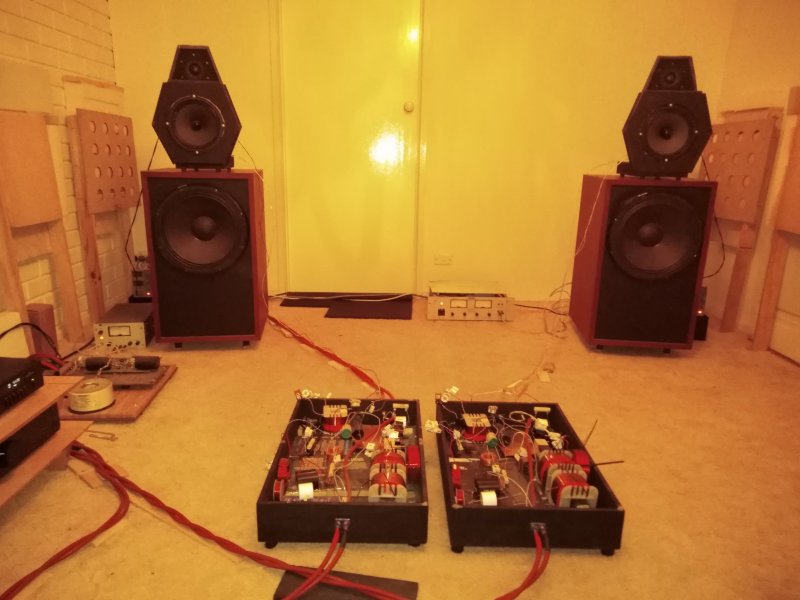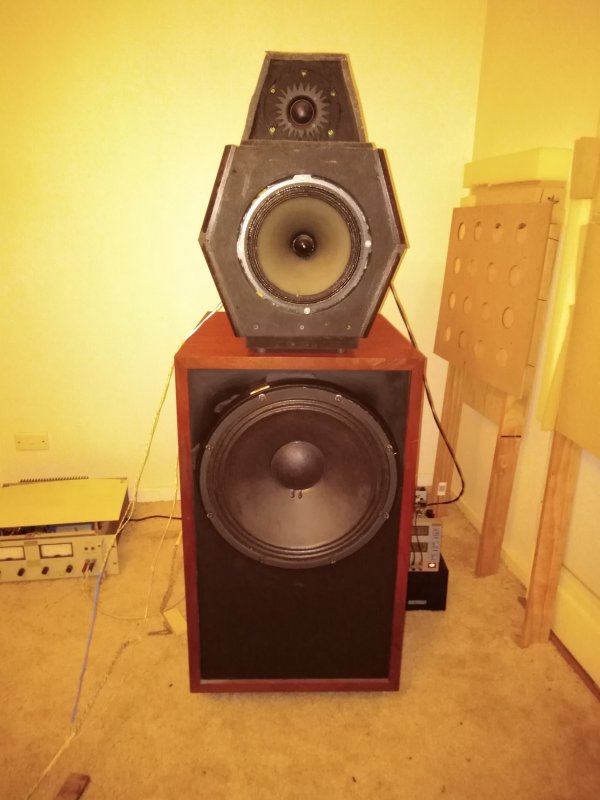9 years ago, I started a speaker project that, for various reasons, never got finished.
If anyone is interested, I started a thread on the Hifi Critic forum here.
Anyway due to being in a complete lockdown in Melbourne, Australia, I decided to use the time to complete these.
They were originally intended to be high efficiency ported bass matched to an open baffle mid and soft dome tweeter, however part way through, I decided I preferred the bass, sealed, and sacrificed some efficiency. One criteria for the project that the drivers should be alnico, but this then changed into 2 of the drivers being field coil.
The drivers are:
The Seas Exotic T35 alnico tweeter (94 db eff)
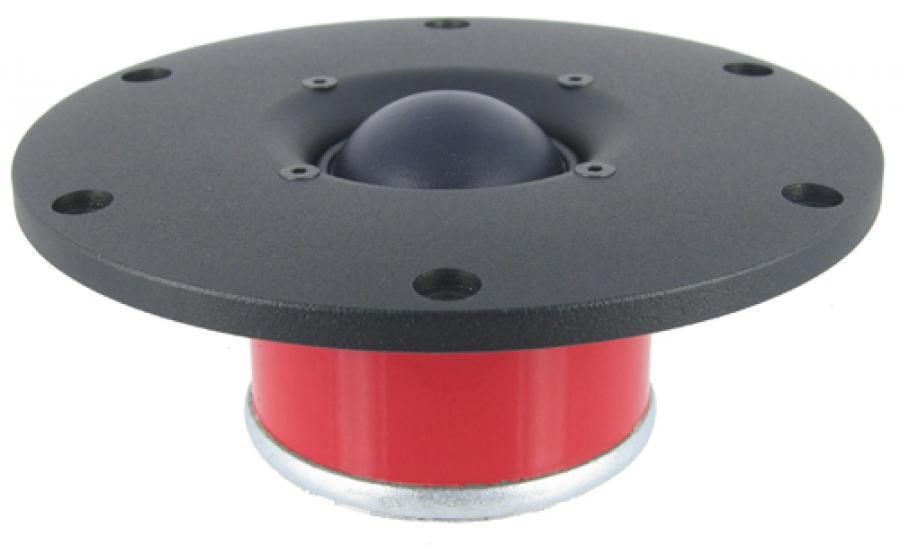
The Supravox 215 exc field coil widebander (99 db eff)

The Wolf Von Langa A150 Bass driver (97 db eff)

A friend in the Melbourne Audio Club built my 130 litre bass boxes for me out of ply with an outer layer of mdf. With help of a another friend I made the upper open baffle sections. They are also made out of layers of ply and mdf.
Some pics:





The crossover is external. I had originally wanted to run the Supravox's full range without a high or low pass, but found in practice that it was interfering with the tweeter and causing an excess of midbass energy.
The current crossover circuit modelled in XSim is:

The driver responses (1/3rd octave) :

The on axis summed response:

As I have a sealed bass alignment, the efficiency has dropped to about 91db, and the bass response is good only down to about 30hz in the room.
I am still working on fine tuning the crossover, and then have a number of other tasks to do.
The quality of the power supply has an impact on the sound of the field coils. For the bass I have massively overrated HP Agilent linear DC power supplies. On the Supravoxes, I have little 5A Mastech power supplies. Although people report that batteries work well, I would like to construct some Tunger power supplies.
The open baffle sections are crudely made, so I also intend to make some much nicer looking units.
Hope people enjoy the thread, and I would welcome any suggestions or criticism.
Thanks
David
If anyone is interested, I started a thread on the Hifi Critic forum here.
Anyway due to being in a complete lockdown in Melbourne, Australia, I decided to use the time to complete these.
They were originally intended to be high efficiency ported bass matched to an open baffle mid and soft dome tweeter, however part way through, I decided I preferred the bass, sealed, and sacrificed some efficiency. One criteria for the project that the drivers should be alnico, but this then changed into 2 of the drivers being field coil.
The drivers are:
The Seas Exotic T35 alnico tweeter (94 db eff)

The Supravox 215 exc field coil widebander (99 db eff)

The Wolf Von Langa A150 Bass driver (97 db eff)

A friend in the Melbourne Audio Club built my 130 litre bass boxes for me out of ply with an outer layer of mdf. With help of a another friend I made the upper open baffle sections. They are also made out of layers of ply and mdf.
Some pics:





The crossover is external. I had originally wanted to run the Supravox's full range without a high or low pass, but found in practice that it was interfering with the tweeter and causing an excess of midbass energy.
The current crossover circuit modelled in XSim is:

The driver responses (1/3rd octave) :

The on axis summed response:

As I have a sealed bass alignment, the efficiency has dropped to about 91db, and the bass response is good only down to about 30hz in the room.
I am still working on fine tuning the crossover, and then have a number of other tasks to do.
The quality of the power supply has an impact on the sound of the field coils. For the bass I have massively overrated HP Agilent linear DC power supplies. On the Supravoxes, I have little 5A Mastech power supplies. Although people report that batteries work well, I would like to construct some Tunger power supplies.
The open baffle sections are crudely made, so I also intend to make some much nicer looking units.
Hope people enjoy the thread, and I would welcome any suggestions or criticism.
Thanks
David



